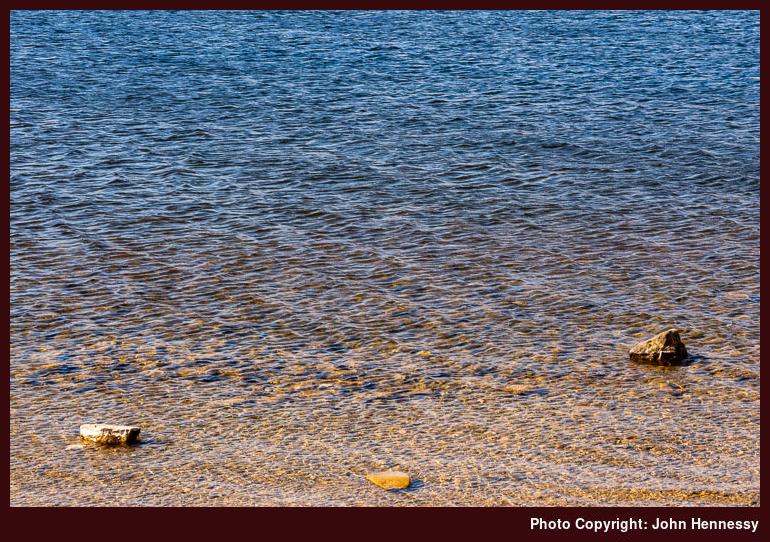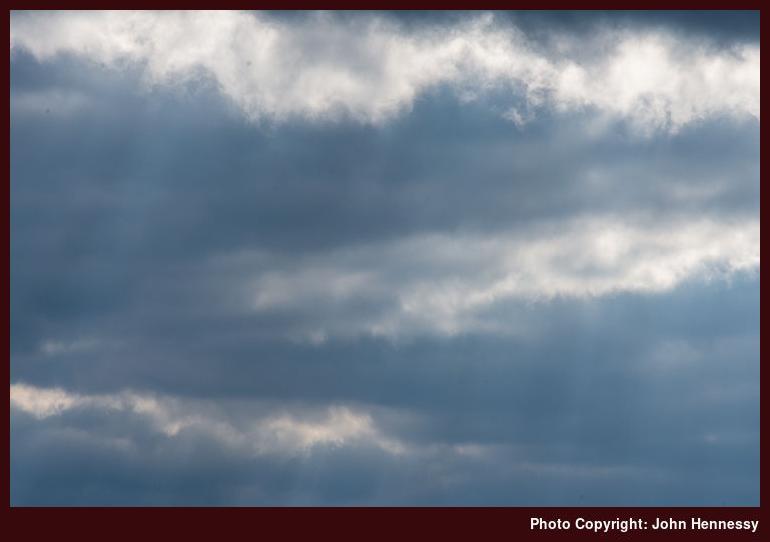Clearance
20th April 2024This year, the Easter period for me has been filled with decluttering of my house and reorganisation of what is inside of it. In part may have been encouraged by the mixed weather that we have been getting for much of the last twelve months, let alone the last few weeks. There appears to be no real break coming on that front, so it was just as well that I took a chance on a mid-Wales trip at the start of March.
That did have some sunshine at times, which is what tempted me to base myself in Aberystwyth for a few days. The first full day allowed for coastal ambling, firstly around Aberystwyth itself (taking in Penparcau) and then south along the coast as I walked back from Borth.
The next day saw me head inland for a hike that took in Pumlumon Fawr and Bwlch Nant-yr-Aran. The wind was not only cold but also brutal in strength, so I did not dally on the tops. It was only dogged determination or perhaps foolish stubbornness that propelled me to the top of Pumlumon Fawr in the conditions.
The air had been clearer with some sunshine to brighten my surroundings, somewhat justifying the exertion of willpower. On the way back from Ponterwyd, the bus driver was wondering what I was doing out and about on such a cold day, only to laugh when I told him that the real problem was the strength of the wind. The skies were greyer as I started my return home, yet I was not disappointed with what I had got.
Since then, there has been a broadband upgrade in advance of all the domestic alterations that I have been making. Charity shops have been beneficiaries of all this clearance, and the restrictions on bin capacity meant that getting rid of any waste proved challenging without access to a car. The added clearance makes all the effort worthwhile, though. Some new pieces of furniture have replaced old ones too, and a spot of painting brightened some walls in its own way. While progress has been good, there is more to do.
That may wait, though, since my mind is turning to excursions should weather windows offer. A walk on Ben Ledi near Callander is a tempting idea, as is a brief visit to Paris that uses rail travel to get there and back. Other French destinations may be later possibilities, like North American escapades to Portland in Oregon or Seattle in Washington State.
It helps to have good maps…
1st March 2024While writing trip reports for Tenerife, I was reminded of the travails that I encountered with using the maps that I had in my possession. At the time, I found myself cross-referencing data between different providers for working out where I was going. That was not ideal, but I managed to make it work.
Something similar happened in Canada. When the maps from Natural Resources Canada did not have all the detail that I expected, I resorted to using the base map provided by ViewRanger because it showed trails on there. For my various traipsings, that did suffice, even if there are possible risks like those highlighted in an article on the TGO website.
In the UK or Ireland, it may be that the tracks shown cannot be used by the public, so you need to check how things look on the ground. Then, there are possible errors because many trails are crowdsourced. That is another reason for checking on what surrounds you and applies when using user routes found on various apps and websites. The likes of AllTrails and Outdooractive come to mind here.

In my case, I ran into no problems in Canada because I was following low-level trails and established tracks much of the time. For off-trail use, mapping from National Resources Canada would have proved as necessary as the use of a compass and awareness of wildlife. Hiking in North America takes one into wilder places after all. Finding paper maps takes a bit more work, as I found, but the added effort pays dividends as long as you watch coverage of where you are planning to go.
In a more recent excursion to California, the Gaia GPS app became invaluable as long as I had downloaded the map data before setting off on hiking trips. Topo Maps+ from Glacier Peak Studios may be another option for users of Apple devices, but I stuck with what I had courtesy of a subscription to Outside+. In any case, Gaia GPS did whatever I needed, and I hardly needed to check any paper maps that I had.
That was just as well, since map scales vary widely for U.S. hiking areas anyway. USGS quads may be standardised, but the same cannot be said for other publishers, with National Geographic being a prominent example. Still, any device has a limited battery lifetime so being proficient with a map and compass remains a necessity, especially in remote areas where mobile signal may be too limited.
Slaughter
29th February 2024Network Rail has been busy cutting down trees beside the Macclesfield stretch of the West Coast Mainline. The result is not pretty and affects a nearby walking route that I often use. Tree trunks have been denuded and left to look lifeless. If life restarts on these, the devastation may be softened, but that is not within sight just yet.
While I can understand that windthrow is a problem for trees next to a railway line during stormy weather, the aftermath of the cutting looked sad to my eyes. Shelter was removed, and it may be that walkers do not need such a clear view of the railway anyway. It all caused a trail that has something of a bucolic aspect to appear more industrial than it used to do.
The time of year hardly helps, with all the leafless trees and bare ground after the winter. Maybe things will look less brutal during the coming growing season. For now, though, there is a lot of carnage that needs healing. At times, I have had my misgivings about tree cover when seeking photos of scenic spots, yet that is not how I feel about this ongoing aftermath.
Consolidation
27th February 2024The magazines Cumbria and Lakeland Walker have been combined, a move that makes me wonder about the wisdom of remaining a subscriber. The strictures at the height of the pandemic saw me subscribe to a number of magazines, mainly to cut down on shop visits and also to contribute to keeping going through a tough time. Lakeland Walker was one of these and had its uses for getting ideas for Cumbrian outings.
Since then, there have been a number of changes. The world has turned against plastic, so many magazines are mailed in paper envelopes, not the best for keeping them dry during some of the deluges that have beset us during the last twelve months. What once was a title printed on A4 paper now is part of a combined title printed on what appears to be A5 paper, an increase from the size of Cumbria magazine, though.
So, we have the perhaps clumsily titled Cumbria and Lakeland Walker magazine. In some ways, the combination is reminiscent of The Scots Magazine, which also has an outdoors section, albeit without maps. Thus, the merged entity can work and there may be a finite number of walking ideas among the Lakeland fells anyway. Only time will tell how things will out for the new title and if I remain a subscriber, for there can be too many magazines and not enough time to read them all.
Records matter…
25th February 2024
The last time that I tried writing an extensive trip report from a while ago, I found myself struggling to recall details. That is the trouble when you leave things for too long. Thankfully, having plenty of photos does help, even if trying to manage too many has its own drawbacks. Viewing them all is one thing, and then there are the tasks of picking out the best for sharing with others and pre-processing the images as well.
It might that having plenty of video footage would help even more, but I have my qualms about intruding on the privacy of others; after all, no one goes for a walk to be in a video recorded by another person who they do not even know. Like working your way through too many photos, you also have to spend time watching the footage as well. Thus, it may not be the panacea that it appears to be at first. Then, editing footage and creating video for internet broadcast is another time-consuming effort altogether.
The ultimate solution would be to take notes like the professionals must do. However, is that taking what is an activity pursued for enjoyment a little too far? That has got in the way of my journaling as I go, and I am not a diary person. Part of the solution is to note brief descriptions in the upcoming trip reports page, and I am inclined to put out some brief reports just after a return as well. The best solution, of course, is to write up the detailed descriptions when everything is fresh in my mind, something that has been faltering in the last few years. Well, they do say that blogging needs motivation…